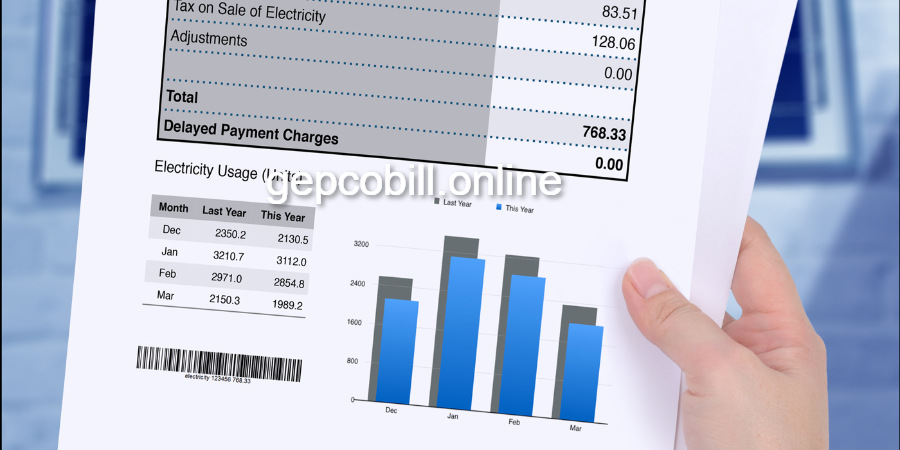energy management terrain because it fosters justice, ethics, and accuracy when dealing with allegations of energy theft. The process that governs all the scenarios of this activity, such as abuse of energy, meter slowdown, and direct hooking, among others, is based on a specific law passed in 1910: the Electricity Act. This section closely examines important parts of the Detection Billing procedure.

1. Energy Theft Detection Billing
Contents
- Strict Compliance:
There is a very strong compliance with the provisions of S-26-A, S-39,
- Assessment Criteria:
Such detection bills for fraudulent abstraction or misappropriated electricity use are based on what is provided for under section 26-a of the Electricity Act, 1910.
- Notice Requirement:
S-39-a, S-44 and S-48 under the Electricity Act, 1910, in the preparation of Detection bills. A prescribed proforma (Annexure-A) is used to carry out the assessment.
As provided for in Annex B, notice should be served on any person suspected of stealing energy, as defined by sections 39 and 39-A of the Electricity Act, 1910, before service of detection bills.
- Exceptions:
No detection bills are raised against meters with broken, fabricated or damaged seals. They will only become liable when their guilt is proven in theft cases.
2 Domestic Premises:
• Normal Premises:
Any detection beyond three months is recovered from the concerned Wapda employee(s) at fault, and a 3-month detection bill is imposed on a consumer.
• A.C. Premises:
The consumer must pay a six-month detection bill and recovery of overdue detection from particular WAPDA employees.
Note: The competent authority makes decisions for Industrial connection and the 3-Phase commercial case of merit.
The detection billing procedure is one of the pillars of the complicated energy management terrain because it fosters justice, ethics, and accuracy when dealing with allegations of energy theft. The process that governs all the scenarios of this activity, such as abuse of energy, meter slowdown, and direct hooking, among others, is based on a specific law passed in 1910: the Electricity Act. This section closely examines important parts of the Detection Billing procedure.

1. Energy Theft Detection Billing.
- Strict Compliance:
There is very strong compliance with the provisions of S-26-A, S-39, S-39-a, S-44 and S-48 under the Electricity Act 1910 in preparing Detection bills.
- Assessment Criteria:
Such detection bills for fraudulent abstraction or misappropriated electricity use are based on what is provided for under section 26-a of the Electricity Act of 1910. A prescribed proforma (Annexure-A) is used to carry out the assessment.
- Notice Requirement:
As provided for in Annex B, notice should be served on any person suspected of stealing energy, as defined by sections 39 and 39-A of the Electricity Act, 1910, before service of detection bills.
- Exceptions:
No detection bills are raised against meters with broken, fabricated or damaged seals. They will only become liable when their guilt is proven in theft cases.
2. Domestic Premises:
• Normal Premises:
Any detection beyond three months is recovered from the concerned Wapda employee(s) at fault, and a 3-month detection bill is imposed on a consumer.
• A.C. Premises:
The consumer must pay a six-month detection bill and recovery of overdue detection from particular WAPDA employees.
Note: The competent authority makes decisions for Industrial connection and 3-phase commercial cases of merit.
Read more information about Electricity
3. Detection Billing for Direct Hooking
Billing Procedure for Registered Consumers Direct Hooking:
• Section 39 and section 39A of the Electricity Act of 1910 provide that any person who connects installations, apparatus or appliances with the works of the licensee without written consent is committing an offence.
• A detection/assumption bill is made to serve as a basis on which to establish the amount of the energy that was maliciously abstracted, consumed, or utilized by an illegal and unregistered consumer.
Conclusion:
In conclusion, the Detection Billing procedure emerges as a cornerstone within the intricate landscape of energy management, playing a pivotal role in upholding principles of justice, ethics, and precision in addressing allegations of energy theft. Enshrined in the Electricity Act of 1910, this process governs a spectrum of activities, including abuse of energy, meter slowdown, and direct hooking. Through stringent compliance with legal provisions outlined in sections S-26-A, S-39, S-39-a, S-44, and S-48 of the Electricity Act 1910, the procedure ensures a robust framework for dealing with instances of fraudulent abstraction or misappropriation of electricity.
The Assessment Criteria, intricately tied to section 26-a of the Electricity Act, 1910, and facilitated by a prescribed proforma (Annexure-A), form a systematic approach to determining the extent of energy theft. Noteworthy is the importance placed on the Notice Requirement, where individuals suspected of energy theft are served notices as defined by sections 39 and 39-A of the Electricity Act, 1910, before the issuance of detection bills.
energy management terrain because it fosters justice, ethics, and accuracy when dealing with allegations of energy theft. The process that governs all the scenarios of this activity, such as abuse of energy, meter slowdown, and direct hooking, among others, is based on a specific law passed in 1910: the Electricity Act. This section closely examines important parts of the Detection Billing procedure.